
PHYSICA B-CONDENSED MATTER
Scope & Guideline
Exploring Innovations in Electrical and Optical Materials
Introduction
Aims and Scopes
- Condensed Matter Physics:
The journal primarily publishes research related to condensed matter physics, exploring the properties of solids and liquids, particularly at the atomic and molecular levels. - Materials Science:
Research on various materials, including their synthesis, characterization, and applications, is a core focus. This includes studies on semiconductors, superconductors, and nanomaterials. - Quantum Mechanics and Quantum Computing:
Theoretical and experimental studies related to quantum mechanics and its applications in computing and information technology are frequently featured. - Nanotechnology:
Research involving the manipulation of matter on the nanoscale is emphasized, particularly in the context of novel materials and their applications. - Optoelectronic Materials and Devices:
The journal covers advancements in optoelectronic materials, including their structural, optical, and electronic properties, and their applications in devices such as solar cells and sensors. - Magnetism and Magnetic Materials:
Papers discussing the magnetic properties of materials, including studies on ferromagnetism, antiferromagnetism, and magnetocaloric effects, are prominently featured. - Thermoelectric Materials:
Research focused on the thermoelectric properties of materials, including their potential applications in energy conversion and refrigeration, is an important area of publication.
Trending and Emerging
- Perovskite Materials:
There is a significant increase in research focused on perovskite materials, particularly for applications in photovoltaics and optoelectronics, driven by their unique properties and potential for high efficiency. - Nanocomposite Materials:
The trend towards developing nanocomposite materials for enhanced performance in various applications, including energy storage and catalysis, has gained traction. - Quantum Computing and Quantum Materials:
Research exploring quantum materials and their applications in quantum computing has seen a rise, reflecting the growing interest in this transformative field. - 2D Materials and Heterostructures:
The study of two-dimensional materials and their heterostructures has become increasingly popular, particularly in the context of novel electronic and optoelectronic devices. - Magnetoelectric Materials:
There is a growing focus on magnetoelectric materials, particularly for applications in memory and spintronic devices, reflecting the interrelation between magnetic and electric properties. - Sustainable and Green Materials:
Research exploring sustainable materials and environmentally friendly processes, particularly in photovoltaics and catalysis, is increasingly prominent, aligning with global sustainability goals.
Declining or Waning
- Traditional Bulk Materials:
Research focused solely on traditional bulk materials has seen a decline as the field shifts towards nanostructured and hybrid materials with enhanced properties. - Classical Magnetism:
While magnetic materials remain important, the focus has shifted from classical magnetism to more complex systems involving spintronics and quantum phenomena. - Low-dimensional Systems:
There has been a gradual decline in studies exclusively focused on low-dimensional systems, with a growing interest in heterostructures and their applications. - Conventional Photovoltaic Technologies:
Research on conventional photovoltaic technologies has waned in favor of novel materials and approaches, such as perovskite solar cells and organic photovoltaics. - Thermoelectric Applications in Bulk Materials:
Research on bulk thermoelectric materials is becoming less prominent as the focus shifts towards nanostructured and hybrid systems that offer improved performance.
Similar Journals

Journal of Physics-Materials
Fostering Global Collaboration in Material ResearchJournal of Physics-Materials, published by IOP Publishing Ltd, serves as a leading platform for disseminating groundbreaking research in the realms of Atomic and Molecular Physics, Condensed Matter Physics, and Materials Science. This Open Access journal, established in 2018, enables wide-reaching visibility and accessibility to high-impact studies, fostering international collaboration and innovation within the scientific community. With a remarkable Q1 ranking in prestigious categories and impressive Scopus rankings—positioned at #38 in Condensed Matter Physics and #29 in Atomic and Molecular Physics—this journal plays a pivotal role in shaping contemporary research and discussions in physics and materials science. Researchers, students, and professionals alike are encouraged to contribute to and engage with the rich knowledge base this journal offers, which is dedicated to advancing the frontier of materials research and its numerous applications.

EUROPEAN PHYSICAL JOURNAL B
Illuminating the Path of Physics Through Open AccessEUROPEAN PHYSICAL JOURNAL B (ISSN: 1434-6028, E-ISSN: 1434-6036), published by Springer, is a prominent international journal based in Germany that focuses on the fields of Condensed Matter Physics and Electronic, Optical and Magnetic Materials. With a converged publication timeline from 1998 to 2024, it caters to a diverse audience that includes researchers, professionals, and students striving for the latest advancements in these vital areas of physics. The journal is recognized with a Q3 ranking in both relevant categories for 2023, showcasing its solid yet notable standing within the academic community. Although currently without an H-index, its Scopus rankings reflect a percentile performance of 41st and 39th, respectively, indicating a growing influence among its peers. The journal offers open access options, ensuring that groundbreaking research is widely accessible and contributes to the collective knowledge within the scientific domain. By aiming to publish high-quality, well-researched articles, the EUROPEAN PHYSICAL JOURNAL B plays a crucial role in disseminating innovative findings and fostering collaboration in the field of physics.
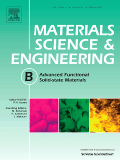
Materials Science and Engineering B-Advanced Functional Solid-State Materials
Connecting Scholars to the Cutting Edge of Materials ScienceMaterials Science and Engineering B: Advanced Functional Solid-State Materials, published by Elsevier, stands as a pivotal platform in the realm of materials science, focusing on the development and characterization of advanced solid-state materials. With an ISSN of 0921-5107 and E-ISSN of 1873-4944, this journal operates out of the United Kingdom and addresses critical issues in condensed matter physics, mechanical engineering, and mechanics of materials. Its consistent recognition, evident in its Q2 quartile rankings across multiple engineering and physics categories and a respectable scope of convergence from 1988 to 2024, signifies its substantial contribution to the field. Researchers and professionals seeking a venue for cutting-edge work will appreciate the journal's commitment to advancing knowledge in functional materials, with its open access features ensuring that innovative findings are readily accessible. Join a community of leading scholars engaging with the latest advancements, shaping the future of materials science.
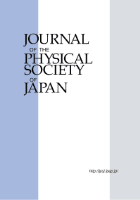
JOURNAL OF THE PHYSICAL SOCIETY OF JAPAN
Illuminating the Path of Scientific Inquiry since 1946The JOURNAL OF THE PHYSICAL SOCIETY OF JAPAN, published by the Physical Society of Japan, has been at the forefront of advancing knowledge in the field of Physics and Astronomy since its inception in 1946. With a commendable reputation reflected in its Q2 ranking within its category for 2023, this journal serves as a vital platform for disseminating high-quality research and innovative concepts. Researchers and professionals alike can engage with cutting-edge studies and reviews that span a diverse range of topics pivotal to the physical sciences. Although the journal does not currently operate with an open access model, it maintains a robust impact on the global physics community, evidenced by its placement in the 59th percentile among a competitive pool of 243 journals. With an unwavering commitment to bridging theory and application, the JOURNAL OF THE PHYSICAL SOCIETY OF JAPAN continues to inspire and cultivate scholarly discourse and collaboration across disciplines.

JOURNAL OF PHYSICS-CONDENSED MATTER
Bridging Fundamental Insights with Industrial Applications.JOURNAL OF PHYSICS-CONDENSED MATTER, published by IOP Publishing Ltd, stands as a premier platform for the dissemination of impactful research in the fields of condensed matter physics and materials science. Since its inception in 1989, this journal has successfully bridged the gap between fundamental and applied research, delivering cutting-edge findings pertinent to both the academic community and industry professionals. Ranking in the Q2 category for both Condensed Matter Physics and Materials Science, it holds a respectable position within the scientific community, as evidenced by its Scopus rankings. With a commitment to fostering innovative research and promoting open dialogue, the journal offers a substantial collection of articles that contribute to the evolving landscape of materials science and physics. Researchers and students are encouraged to engage with the journal’s rich content, which not only enhances their academic pursuits but also plays a crucial role in advancing technologies based on solid-state materials.
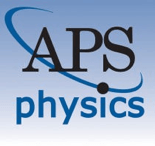
PHYSICAL REVIEW B
Exploring the Depths of Electronic and Magnetic MaterialsPHYSICAL REVIEW B, published by the American Physical Society, is a leading journal in the field of condensed matter physics and materials science, particularly focusing on electronic, optical, and magnetic materials. With an ISSN of 2469-9950 and an E-ISSN of 2469-9969, this periodical has garnered a prestigious reputation, achieving a Q1 ranking in both relevant categories as of 2023. The journal has recorded significant impact as reflected in its Scopus ranks, notably positioned at #95 out of 434 in Condensed Matter Physics and #75 out of 284 in the Materials Science sector, illustrating its importance in advancing research and discussions in these critical areas. Although it does not offer open access, PHYSICAL REVIEW B remains an invaluable resource for academics, researchers, and professionals seeking to increase their understanding of contemporary issues in condensed matter and material sciences. Established in 2005, this journal continues to foster innovation and dissemination of knowledge, making it a cornerstone publication for those engaged in cutting-edge research.
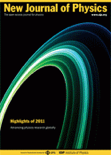
NEW JOURNAL OF PHYSICS
Innovating ideas, illuminating the world of physics.NEW JOURNAL OF PHYSICS, published by IOP Publishing Ltd, is a prestigious open-access journal that has been at the forefront of the physics community since its inception in 1998. With an impact factor that places it in the Q1 category of Physics and Astronomy (miscellaneous) and a commendable ranking of #49 out of 243 in the general physics and astronomy category according to Scopus, this journal is recognized for its significant contribution to advancing research in the field. The journal caters to a broad scope of topics, providing a platform for the dissemination of cutting-edge research findings and innovative theoretical explorations. Operating from the United Kingdom, it offers a truly international perspective, making its contents accessible and impactful to a global audience. With robust open-access options, the NEW JOURNAL OF PHYSICS ensures that research findings are freely available, promoting collaboration and knowledge sharing among researchers, professionals, and students alike. This commitment to accessibility, combined with its high-quality content, makes it an essential resource for anyone engaged in the physics community.

JOURNAL OF ELECTRONIC MATERIALS
Pioneering Discoveries in Electronic, Optical, and Magnetic MaterialsWelcome to the Journal of Electronic Materials, a premier publication in the field of materials science. Published by Springer, this esteemed journal has been a beacon for groundbreaking research in electronic, optical, and magnetic materials since its inception in 1972. As an established resource, it boasts a commendable impact factor and categorically ranks in the second quartile (Q2) in key areas such as Condensed Matter Physics and Electrical and Electronic Engineering, as well as holding a respectable third quartile ranking in fields related to Electronic, Optical, and Magnetic Materials and Materials Chemistry. Researchers, professionals, and students can access a wealth of knowledge as we publish original articles, reviews, and cutting-edge research that push the boundaries of science and technology in these critical fields. Stay informed and engaged as we explore advancements that shape the future of electronic materials.
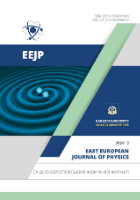
East European Journal of Physics
Exploring the frontiers of Eastern European research.The East European Journal of Physics, published by the V N Karazin Kharkiv National University, is a dynamic open-access journal dedicated to advancing research in the fields of Physics and Materials Science. Since its inception in 2014, the journal has become a platform for scientists and academicians throughout Eastern Europe and beyond, fostering collaboration and dissemination of innovative studies and findings. With its ISSN 2312-4334 and E-ISSN 2312-4539, it attracts a global readership and submissions that are rigorously peer-reviewed to ensure the highest scholarly standards. Despite currently holding a Q4 category ranking in both Materials Science and Physics and Astronomy, as well as modest Scopus rankings, the journal is positioned to play a crucial role in elevating the visibility and impact of research emanating from this geographically and scientifically significant region through an open access model. This commitment to open scholarship is critical for fostering academic exchange and impact, making the East European Journal of Physics a valuable resource for researchers, professionals, and students seeking insight into the latest developments within these fields. Join us in exploring the frontiers of knowledge and innovation from Ukraine and its surrounding areas.
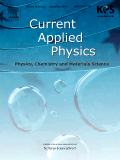
CURRENT APPLIED PHYSICS
Illuminating the Path of Applied Physics Research.Current Applied Physics is a leading journal published by Elsevier, specializing in the dynamic fields of Physics and Materials Science. With an ISSN of 1567-1739 and an E-ISSN of 1878-1675, this journal focuses on the latest advancements and applications of physics principles in various practical domains. Operating from the innovative hub of Amsterdam, Netherlands, Current Applied Physics occupies a significant niche in the scientific community, evidenced by its Q2 ranking in both the Physics and Astronomy and Materials Science categories for the year 2023, along with impressive Scopus rankings that highlight its relevance in the fields of General Physics and General Materials Science. The journal's scope encompasses a wide range of topics, fostering interdisciplinary collaboration and facilitating the exchange of knowledge among researchers, professionals, and students. Each issue features peer-reviewed articles that contribute to the understanding and application of physical sciences, making it an essential resource for those aiming to stay at the forefront of research and innovation in applied physics.